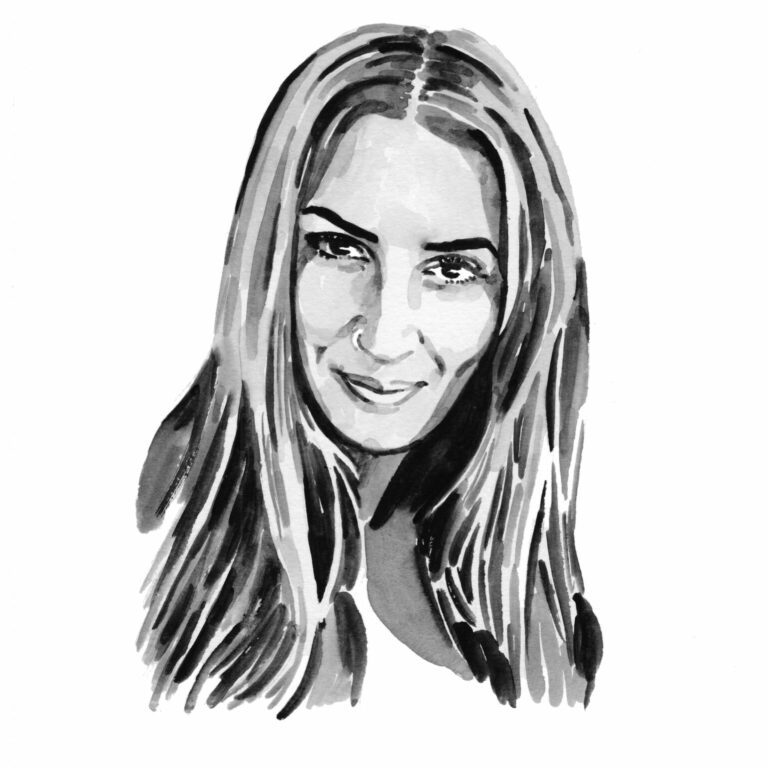Ana Lúcia Furtado Soares

Who I am
If I had to define myself in a word, I would choose ‘thalassophile’, a lover of the sea. Born and raised in a seaside town in Portugal, I was lucky to be in direct contact with the sea and I became fascinated by the marine ecosystem at a very early age. Understanding the sea and its organisms has always been my dream. During my studies – earning a Bachelor’s in marine sciences and a Master’s in marine biodiversity and conservation – I conducted research in various fields of marine science around the globe, including in Brazil, France, Portugal and Belgium.
Elasmobranchs, particularly sharks, have always captivated me. I believe the public often misunderstands these creatures, focusing on the fear of shark attacks rather than their ecological importance. Many shark species are endangered, and their role in maintaining balance in the marine ecosystem is critical.
I served as an education coordinator at the NGO Elasmo Project in the UAE, a non-profit initiative that focuses on research into sharks and rays in the Arabian Sea region, conserving them and raising awareness about them. This role inspired me to launch the Angola Elasmo Project, a research and protection initiative. This decision came from the lack of data about species that occur in Angolan waters and the impact of fishing on shark and ray populations on them. As a concerned citizen, I felt a duty to address the country’s environmental challenges.
My goal is to conserve these globally endangered species and promote sustainable fishing practices among the Angolan population. This pioneering marine conservation project in Angola aims to lay a foundation for developing environmental ethics, knowledge and awareness in both the public and the government. Through education and conservation efforts, I hope to foster a deeper understanding and appreciation for these vital marine species and their ecosystems.
Where I work
Located in south-western Africa, the Angolan coast lies within the highly productive Benguela Current Large Marine Ecosystem, where a strong upwelling supports extensive semi-industrial and small-scale fishing. It is recognised that both these types of fishery play an important role in the mortality of marine megafauna, including sharks and rays, which are caught in large numbers, intentionally and as bycatch, in Angola’s coastal waters. Local fishers also catch sharks and rays, among a wide array of other species, but due to the lack of capacity in the country, the difficultly of monitoring scattered locations and the fact that Angolan fisheries are not required to report levels of bycatch, we know little about catch quantities, species composition and the impact of fishing on elasmobranch populations. It is likely that small-scale and semi-industrial elasmobranch fisheries are unsustainable, as some of the species observed during the surveys are categorised as Endangered and Critically Endangered and are included on CITES Appendix II.
The Angola Elasmo Project began the collection of shark and ray data and its on-site awareness campaigns in the province of Namibe. Located in southern Angola, Namibe is dominated by the Namib Desert and characterised by a coastline with shelving sandy beaches interspersed with short sections of cliffs and rocky coast. An almost continuous upwelling occurs here, due to the lack of a sharp, inshore thermocline. The population is concentrated in the two coastal towns of Tômbua and Namibe.
The introduction of the Angola Elasmo Project to Angolans is extremely important, as the project raises concerns about sustainable fishing in West Africa, and particularly in Angola, where not only are marine data insufficient, but there is no awareness of environmental conservation, no policy regarding conservation and fisheries, and no indication that this situation will be addressed soon.
What I do
During my visits to Angola, I identify species and collect data at several landing sites in Namibe and in the northern fishing zone, closer to the capital, Luanda. As there are no data on elasmobranch landing sites in Angola, it is important to explore all possible fish landing sites, so I have made several trips to discover potential sampling sites and find out whether they meet the ideal criteria. Most of the locations are extremely difficult and time-consuming to reach. Nevertheless, over the course of four field trips to date I have covered a large part of the Namibe coast and observed its fisheries. As some landing sites have a closed-door policy, I have to try to establish connections with locals to gain access to them.
At the sites, I collect biological data on shark and rays, including tissue samples for DNA barcoding. While waiting for the landings, I interview fishers and other stakeholders to gain an understanding of the social and economic drivers of shark and ray fishing. Considering that there was no previous information regarding shark and ray fisheries in Angola and that I spend a lot of time connecting with locals to gain access to elasmobranch fishery areas, we can regard the project as successful in terms of the data collected so far and the communication of results. In fact, communities have become involved in elasmobranch awareness initiatives and we have been able to engage more with fishers’ groups. Connecting with local student communities is also crucial to establishing the conservation component of this project, as we increase awareness by building capacity and encourage public involvement by developing workshops. We now have volunteers running awareness campaigns and being trained in how to conduct field work and identify sharks and rays.
